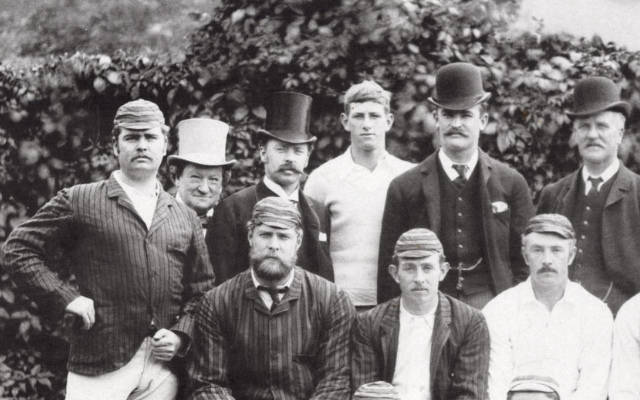July 17, 1888 – When 27 wickets fell in the space of four hours during an Ashes Test
The sticky wicket at the Oval turned out to be nightmare for the batsmen.
2 Min Read


Australia toured England in the summer of 1888 in the hope of putting an end to England’s dominance in the Ashes. England had won all the six Ashes series by then and also won seven matches in succession against the Aussies, a streak that began during the 1884-85 series decider. Hoping for their maiden Ashes series win, Australia locked horns with the home team at The Oval in the first Test of the 3-match series.
Australia elected to bat first after the game began around 3 PM local time as the first day’s play was washed out due to rain. The Aussies couldn’t make a mark in the first essay as they were bundled out for 116 with no player scoring more than 22 runs. The English team, in reply, lost three wickets for 18 runs before going to the stumps on the first day. Play on the second day resumed around 11:30 AM local time on a pitch that was pretty sticky.
Wickets galore!
Resuming the day on 18/3, the English team reached 22/3 before losing four wickets to add four more runs. They were further left reeling at 35/8 before the No.10 batsman Jonny Briggs scored 17 runs to push England’s total past 50. They were eventually bowled out for only 53 runs despite lasting 50 overs as Charlie Turner claimed a 5-wicket haul. Australia found themselves in an even tricky position after earning a 63-run first-inning lead.
They collapsed to 18/7 before John Ferris scored an unbeaten 20 for pushing the total to 60. England’s opening bowlers George Lohmann and Robert Peel took four wickets apiece to limit the target to just 124. Though the target looked quite tiny, the pitch was so difficult to bat that even the shortest of targets looked like a mountain to climb. England began the chase after the Lunch break and reached 29/0 before the inevitable happened.
Charlie Turner and John Ferris bowled unchanged to pick five wickets each and bowl England out for only 62. Opener William Grace scored 24 runs while skipper Allan Steel (10*) was the only other England batsman to reach double digits. Interestingly, Australia’s Turner and Ferris also took eight wickets between them in the first innings and were also only players to reach double digits in Australia’s second innings.
A total of 27 wickets during the second day’s play which are still the most number of wickets fell in a single day of a Test match. In fact, all those 27 wickets fell in around four hours of the time period. Despite taking an early lead in the series, Australia ended up on the losing the series once again. They had to wait till 1891-92 home season to register their maiden Ashes Test series victory.
Download Our App